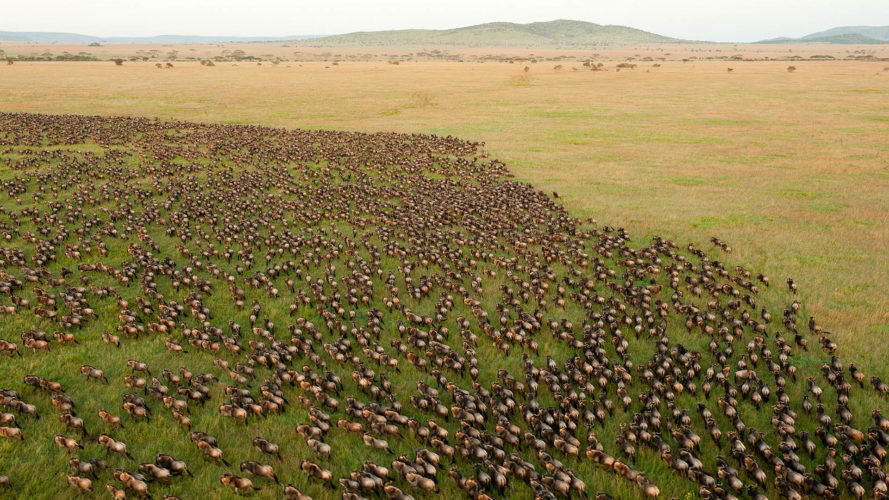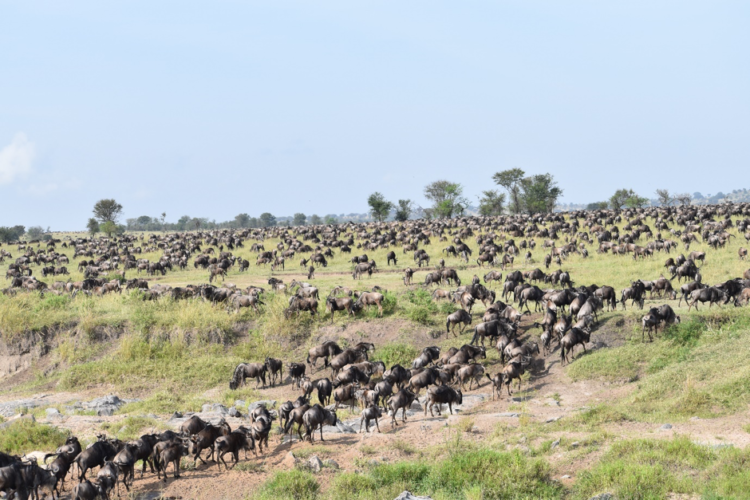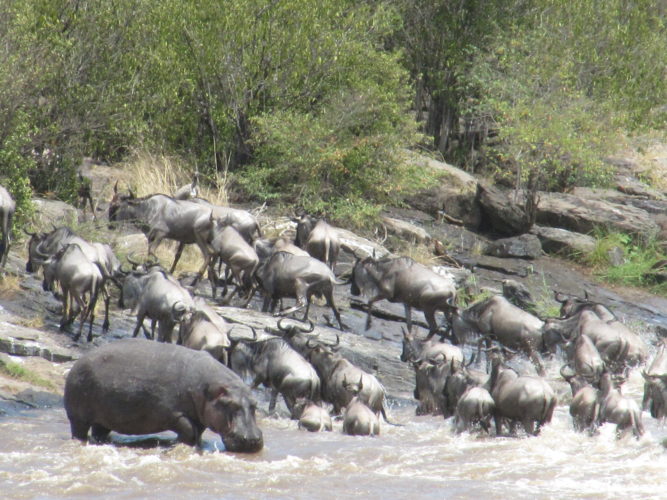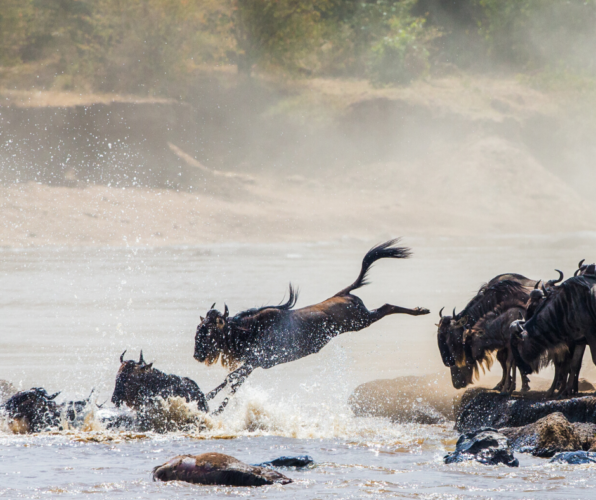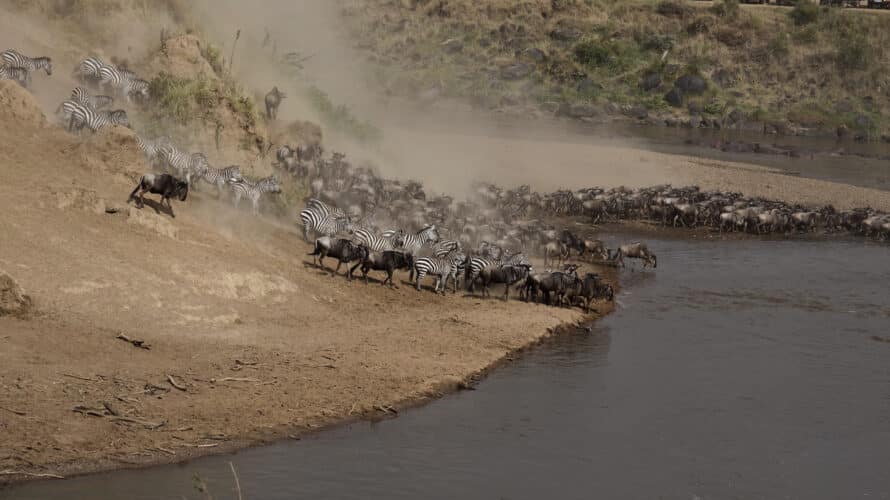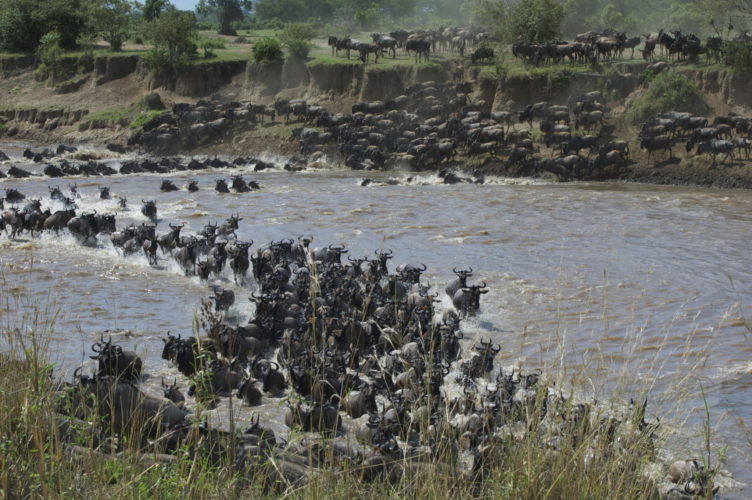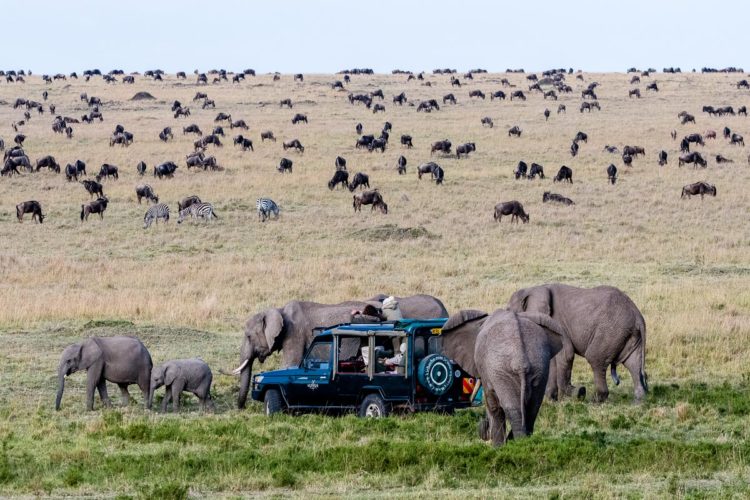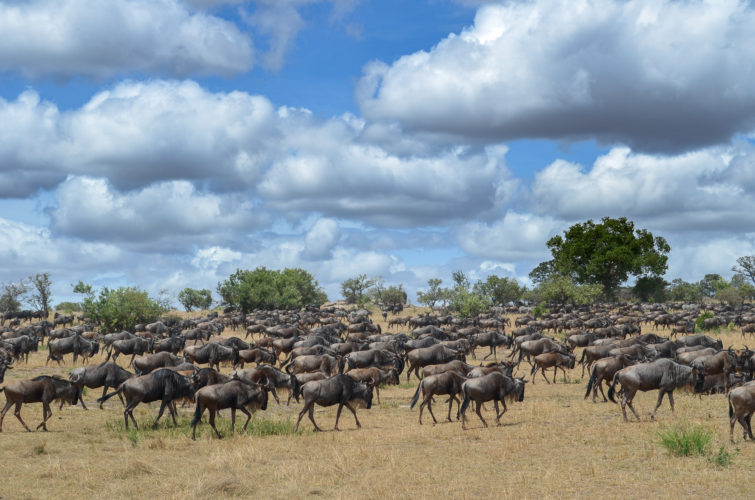Great Migration Safaris
The greatest wildlife show on Earth
The Great Wildebeest Migration in East Africa’s Tanzania and Kenya is also known as the “greatest wildlife show on Earth”. And no wonder. It is one of the most sought-after experiences for wildlife and nature lovers and an ever-moving circular migration of a few million animals across two countries and the vast Serengeti and Mara ecosystem. Wildebeest are in the greatest numbers, but others move with them – safety in numbers including zebra, gazelle and other antelope. It is, quite simply, one of the greatest natural spectacles on the planet.
But people often get confused about the migration, thinking that it has start times and ending dates.
The reality is, there is no beginning or end to the migration – the animals are always on the move, on a constant search for water and better grazing areas. The word Serengeti (which is derived from the Maasai word Siringitu) actually means “the place where the land moves on forever”. Whether you go in March or December, the migration will be “on” – it’s just that the animals will be doing different things, and in different places.
Regardless of when you go, there’s always high drama as thousands of animals are taken by predators and thousands more are born each year, replenishing the numbers and sustaining this epic circle of life.
January to March:
Calving season
This is one of the most awe-inspiring times to witness the Great Migration. From January through to March, the vast herds of wildebeest, zebra, and antelope gather in the nutrient-rich grasslands of the southern Serengeti and the Ndutu Plains region in Tanzania. The short-grass plains here provide ideal conditions for calving – wide open visibility to spot predators and nutritious grasses to support over half a million nursing mothers.
Each day for a window of 2 – 4 weeks, thousands of calves are born (often around 8,000 a day during peak calving), creating heartwarming scenes of little wobbly-legged newborns braving their first steps. But with new life comes the inevitable increase in predator action. Lions, cheetahs, leopards, and hyenas follow the herds closely, taking advantage of the abundance of vulnerable prey.
For travellers, it’s certainly a thrilling time to visit – the sheer volume of wildlife is extraordinary, and the predator-prey interactions are dramatic and raw, often confronting! The weather during this time is warm with some rain, but the landscape is lush and beautiful, and the roads are still accessible. It’s a photographer’s dream with little dust in the air!
April – June:
Northward movement
As the rains taper off in late March and April, the herds begin moving northwest through the Central Serengeti toward the Western Corridor and the Grumeti River area. This is the start of the long journey north in search of fresh grazing, and while the movement is more dispersed compared to calving season, it’s no less impressive. The Central Serengeti is famous for its granite boulders and lion prides lazing about absorbing the morning sunlight. It’s the ultimate vantage point for the predators as they watch and wait for an opportunity to attack.
The weather during these months tends to be wetter, particularly in April and May, as this is considered Tanzania’s green (or long rains) season. The landscape is lush and vibrant, but game viewing remains excellent with fewer tourists and dramatic, moody skies. Predators remain active, especially as herds bunch up to move together in greater numbers.
This is a quieter, more atmospheric time to travel – and offers a sense of exclusivity with fewer vehicles and great value in terms of accommodation pricing.
June to July:
River crossing #1
By June, the herds are gathering in the Western Serengeti, preparing to cross the first of the great rivers. This one is called Grumeti River. While not as dramatic as the Mara River crossings, it can still be thrilling watching massive Nile crocodiles lying in wait, and wildebeest nervously hesitating on the banks before making the plunge. Weather improves, long rains end and dry season kicks in. Skies clear, temperatures cool and wildlife viewing is excellent with predator numbers still high!
This stage of the Great migration is lesser known and less crowded, so it’s a superb option if you want drama of river crossings without the mid year tourist rush!
July to August:
River Crossing #2
This is the most famous and dramatic chapter of the Great migration. From July to August, the herds cross from Tanzania into Kenya’s Masai Mara, navigating the treacherous Mara River. These crossings are chaotic and breathtaking – a raw spectacle of survival as wildebeest and zebra leap into crocodile-infested waters, often trampling one another in their desperation.
Travellers flock from around the world to witness this event, and both the Northern Serengeti and Masai Mara offer incredible opportunities to see the action. It’s peak dry season, so conditions are excellent for game viewing, though also busier and more expensive. Still, the payoff is unforgettable.
Be prepared for large numbers of vehicles lined up along the banks and you can literally wait all day for the herds to take the plunge. So patience is a virtue and so too is a great guide!
“I like animals. I like natural history. The travel bit is not the important bit. The travel bit is what you have to do in order to go and look at the animals.”
– Sir David Attenborough
